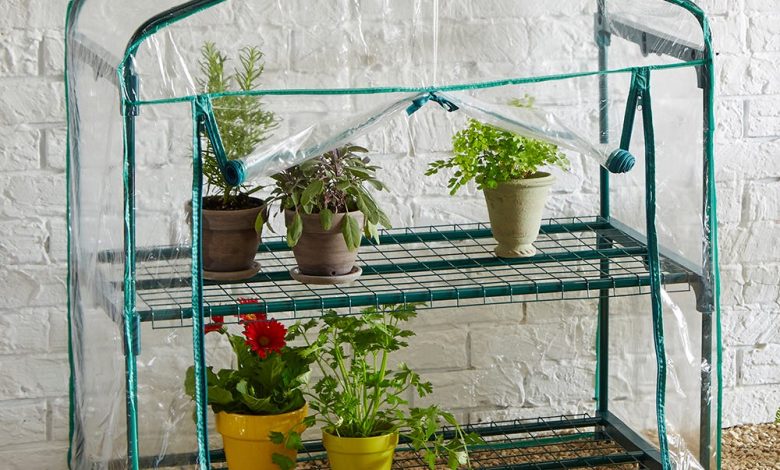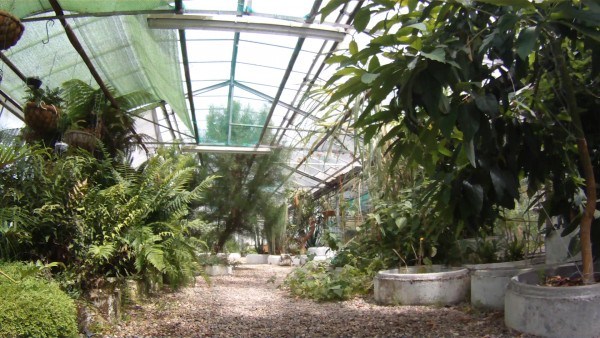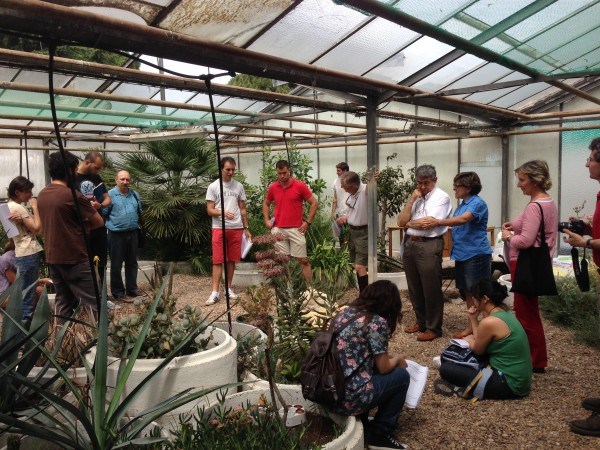Greenhouse Green Classroom: Chiles, Amaranth and more

Very good to all Agrohuerters. About the month of May and to celebrate the festivity of San Isidro, patron saint of Madrid residents and agricultural engineers, a very particular educational gathering is held in which very interesting topics are addressed, both teachers and students of the school participate and you can Tasting little-known new foods, the marathon of gatherings in the greenhouse green classroom.
What is the greenhouse green classroom?
As Lucía already told you, the greenhouse green classroom, known as AVI, is an educational greenhouse that has been in operation for more than 20 years, houses more than 150 botanical species from different climates and regions and makes possible the different concerns of students such as the development of grafts on pistachio trees or the growth of interesting and little-known species such as stevia or amaranth.
To give you an idea of the number of species it houses, the greenhouse green classroom is divided into 6 different modules, in which we find fruit trees, orchids, carnivorous plants, a very wide collection of cacti and succulents, unique Mediterranean plants that only they can develop in very chalky or saline soils, tropical and subtropical species (papaya, sugar cane…), species for vertical gardens, they are preparing a vertical garden with humidity sensors and automatic irrigation controlled by Arduino, and much more.

Many of these peculiar species, and not very common in Spain, are familiar to students who have worked with them on various projects or jobs, growing them on various farms worldwide or simply because they are common in their countries of origin, for this and For other reasons, the greenhouse green classroom gatherings were created to share knowledge from experience in a close and enjoyable way.
What are the Greenhouse Green Classroom marathons?
The hard work of both the teacher who started it, César Gómez Campo, and its current coordinator, Santiago Moreno, make these talks in the greenhouse green classroom possible, where the students tell in a friendly and close way their knowledge and experiences applied to different little-known botanical species.

In this first edition of talks in the greenhouse green classroom, 9 different topics were presented in which more than 7 students participated. I was lucky enough to be there recording the talks and I wanted to summarize the topics that were most interesting to me:
About Peru and its crops.
As I have told you, these gatherings of the greenhouse green classroom, try to share knowledge and experiences. In this case, a student told us about his stay in Peru in which he collaborated on various farms. He told us a little about the most important crops, the way potatoes are consumed (chuño and moraya) and how the crops are distributed depending on the country’s orography. The largest agricultural production occurs in the desert itself due to the steep slopes of the alpine area and the bad weather of the highlands, something really impressive.
The Capsicum of Mexico and other interesting plants.
In this talk, an old acquaintance from our YouTube channel, Darek Blajer, who some time ago taught us how to raise ladybugs at home, was telling us about the different types of peppers that are grown in Mexico, he classified them based on the scale of Scoville and gave us an idea of why they are so important there.

amaranth.
Sandra already told us how to grow amaranth and its benefits, so I’ll just leave you with a curious note about this species. Wild Amaranth, not the species improved for its production, can be commonly found as a weed in many gardens. It is also very difficult to eradicate as it has an apical root that can reach a depth of 30 cm.
Amaranth destined for production has been improved to have a more erect habit, a single more compact inflorescence and be less prickly, something very annoying being a crop that is normally harvested by hand.
High nutritional value crops.
This talk was very curious and useful since a vegetarian student for more than 10 years and stronger and healthier than many carnivores are, told us what foods he preferred and usually ate to have a balanced diet without neglecting any amino acid, something really interesting.
These are just some notes that were curious to me, as you can see, unusual topics about agricultural species or the production and consumption habits of different countries are addressed. I loved these gatherings, among other things, because it is very gratifying when someone talks to you about their experience growing crops in other countries, not only does it give you technical knowledge, but it also shows you a different culture. I hope I have aroused your curiosity without telling you about the amount of puffed sorghum, roasted plantain and cassava, tropical fruit juices and other exotic food that we were able to taste, so if you are interested I hope you will sign up for the next gatherings. All the best !


![Photo of Prune a Laurel: [Importance, Time, Tools, Considerations and Steps]](https://www.complete-gardening.com/wp-content/uploads/2022/08/prune-a-laurel-importance-time-tools-considerations-and-steps-390x220.jpg)
![Photo of Canna Indica: [Sowing, Care, Irrigation, Substrate and Pests]](https://www.complete-gardening.com/wp-content/uploads/2021/06/canna_indica_1587572154-390x220.jpg)
![Photo of The Complete Guide to Persimmon Cultivation [What You Should Know]](https://www.complete-gardening.com/wp-content/uploads/2022/08/the-complete-guide-to-persimmon-cultivation-what-you-should-know-390x220.jpg)